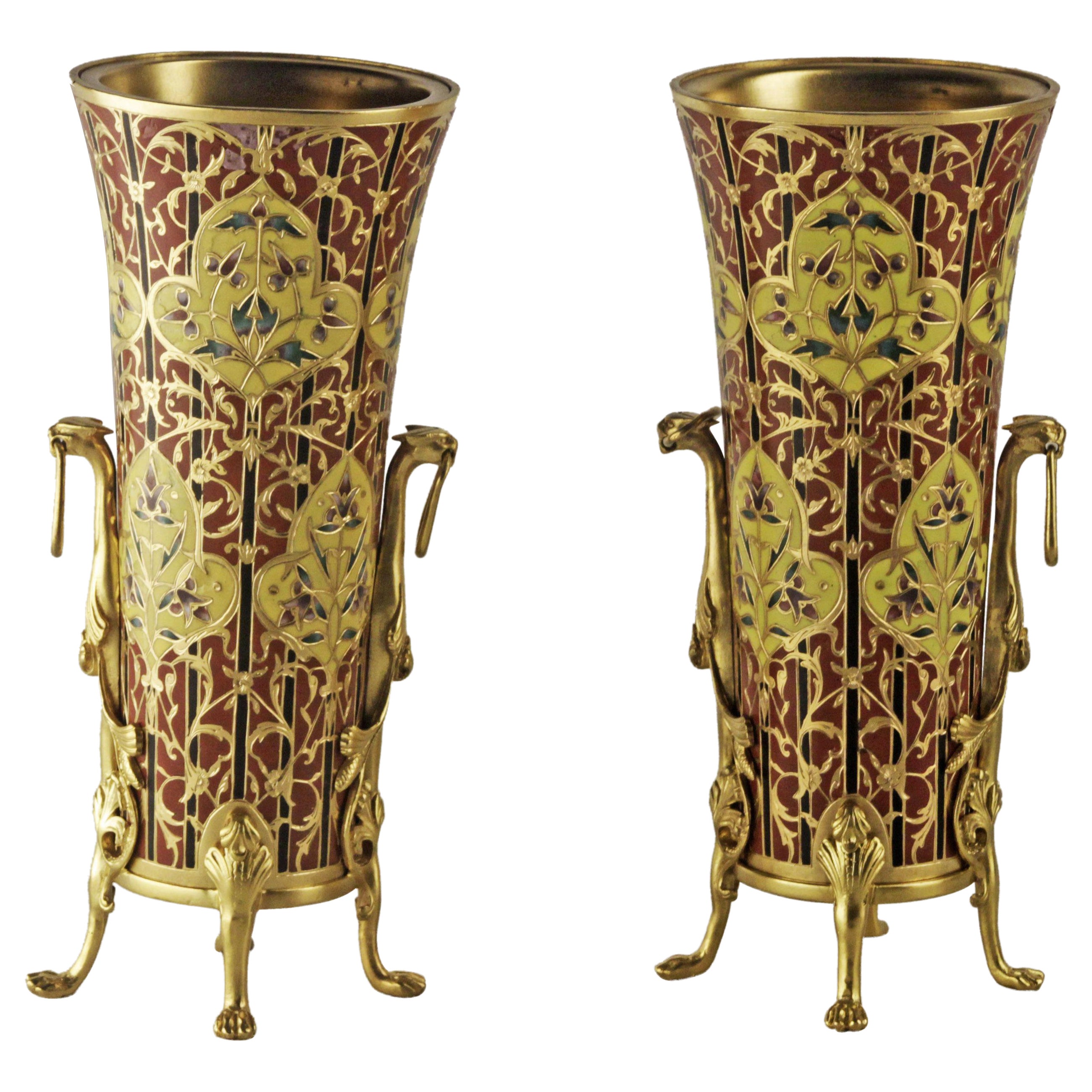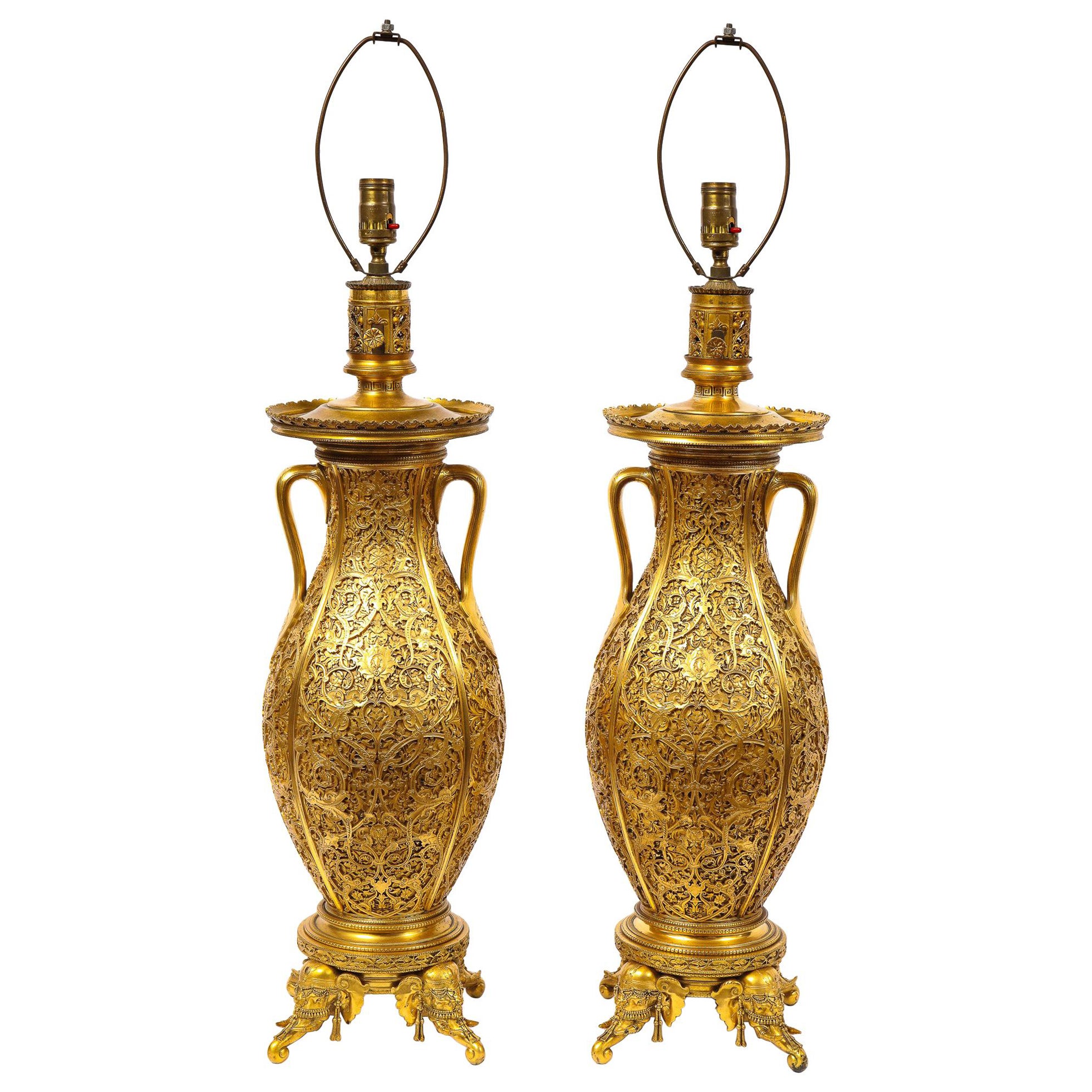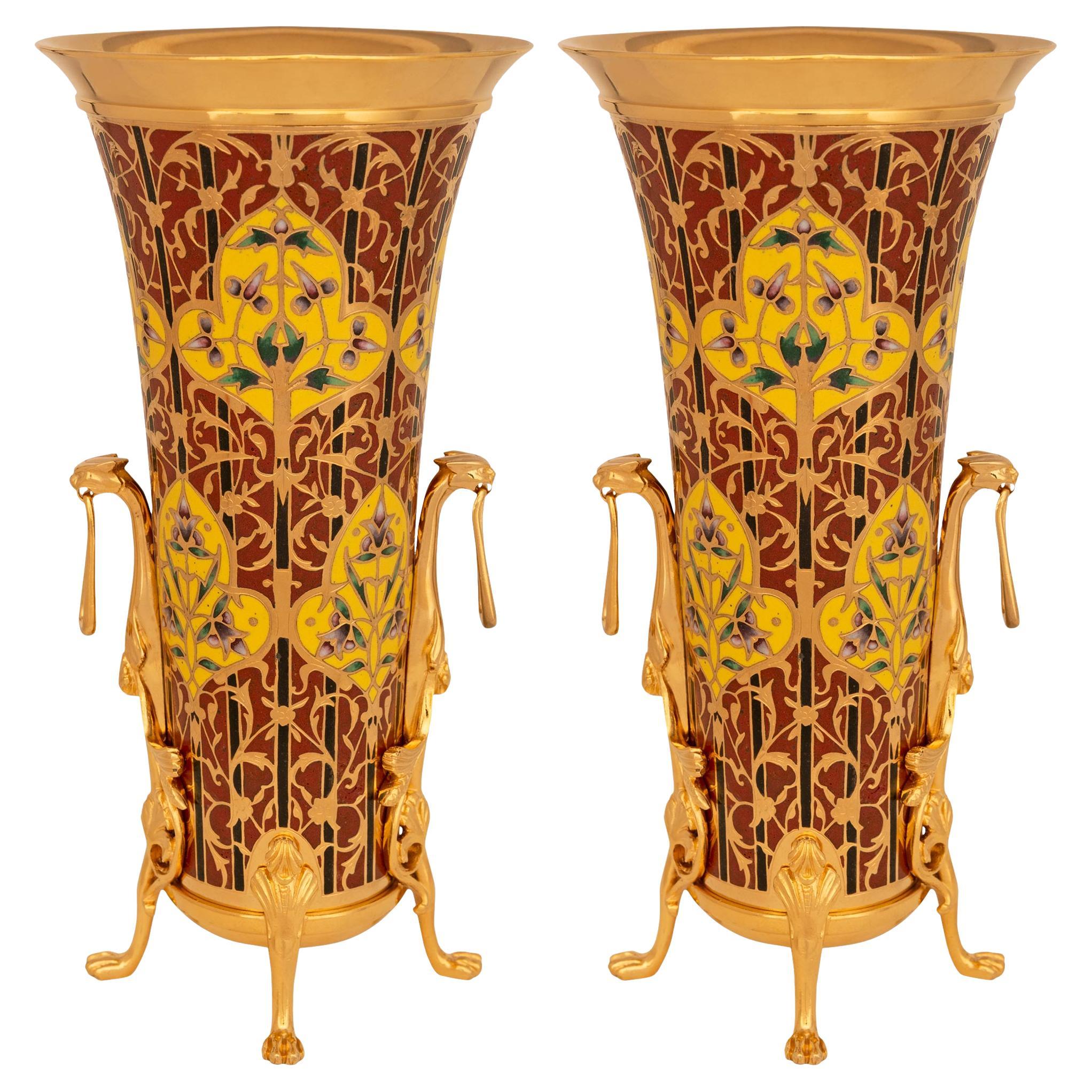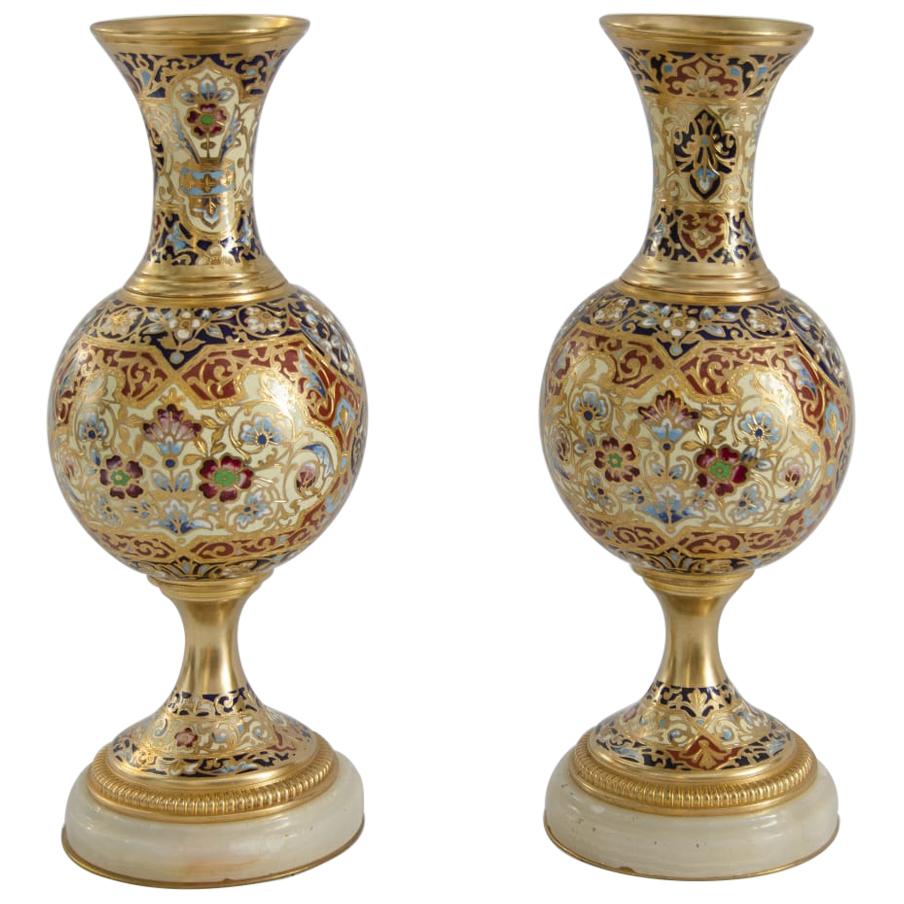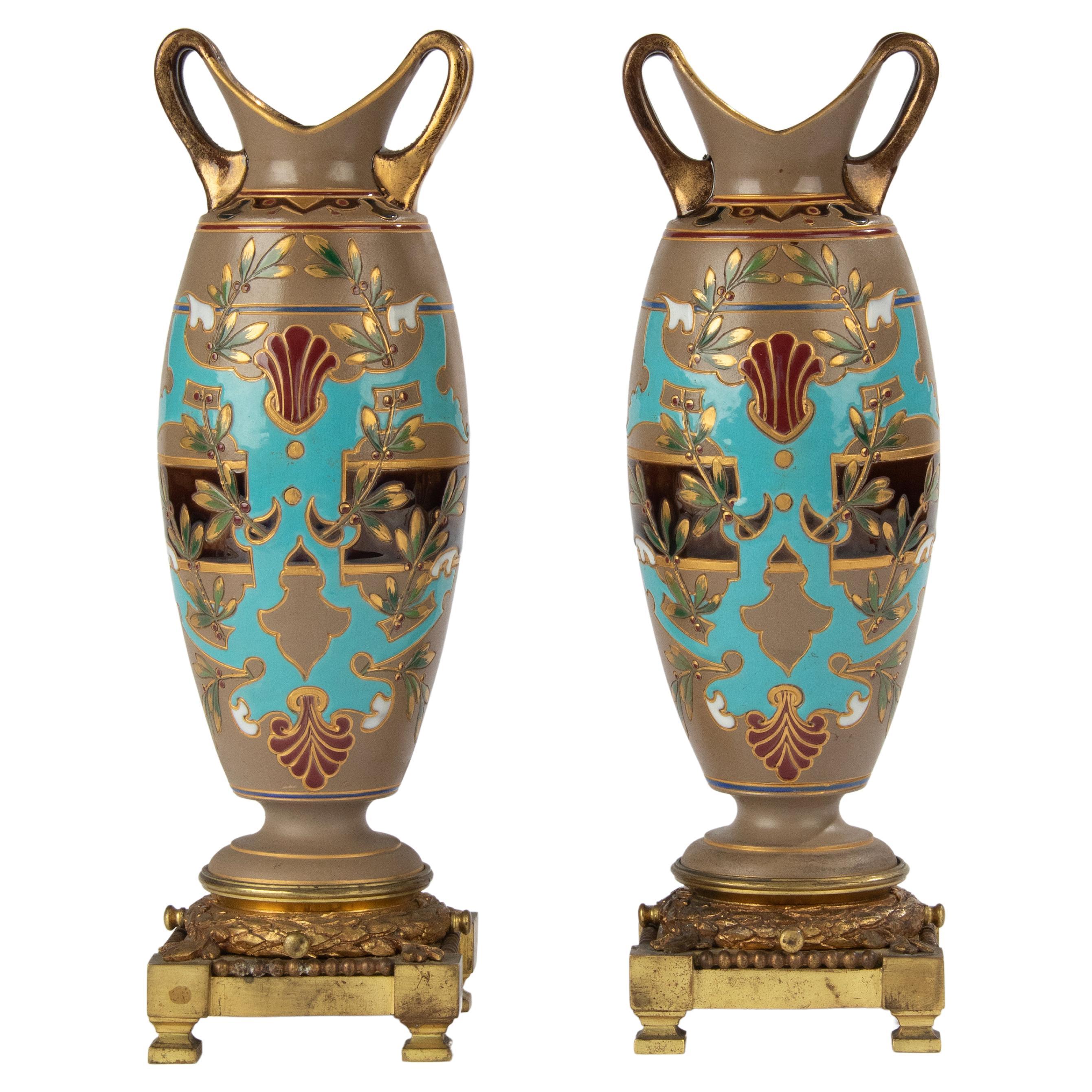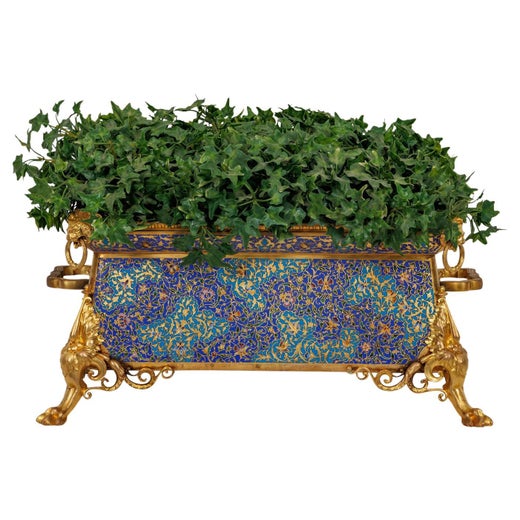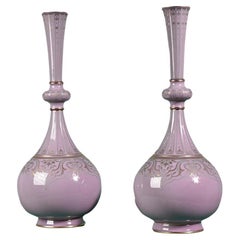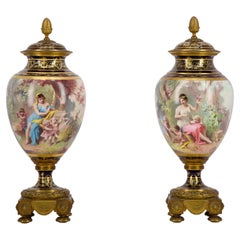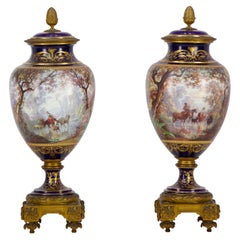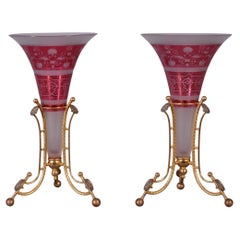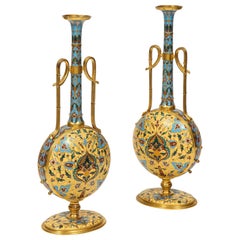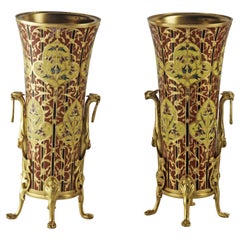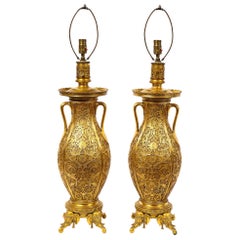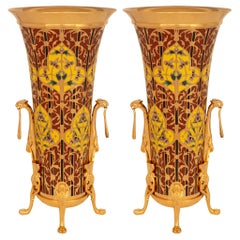Louis-Constant SÉVIN, Ferdinand BARBEDIENNE, Pair of Ornamental Vases
About the Item
- Creator:Louis-Constant Sevin (Artist),Ferdinand Barbedienne (Artist)
- Dimensions:Height: 30.69 in (77.96 cm)Diameter: 11 in (27.94 cm)
- Style:Napoleon III (Of the Period)
- Materials and Techniques:
- Place of Origin:
- Period:
- Date of Manufacture:1862
- Condition:
- Seller Location:SAINT-OUEN-SUR-SEINE, FR
- Reference Number:Seller: 126001stDibs: LU7662243380532
Ferdinand Barbedienne
Founded by one-time Parisian wallpaper dealer Ferdinand Barbedienne and engineer Achille Collas, one of the most revered foundries in 19th-century France began with the invention of a revolutionary 1830s-era device that could produce proportional reproductions — large or small — of sculptures. Collas’s machine, which yielded miniature likenesses of antiquities for the interiors of homes the world over, was pivotal to the success of the F. Barbedienne Foundry. The successful firm earned prestigious awards and critical acclaim and created exquisite bronze candleholders, clocks and lamps for a range of wealthy and prominent clients.
The duo first launched their company under the name Société Collas et Barbedienne, and early on, they optimized chemical processes for pigmenting and patinating their bronze statuettes. After Collas died in 1859, Barbedienne forged on alone, and the company’s name changed to simply F. Barbedienne.
Barbedienne employed more than 300 workers at that point, and the Maison created a range of furnishings and decorative objects that featured the integration of marble and ormolu accents. However, with the onset of the Franco-Prussian War of 1870, the foundry was forced to retrofit its molds, and the production of cannons replaced sculptures, furniture and vases.
When Ferdinand Barbedienne passed away in 1891, his nephew and heir, Gustave Leblanc, took over as president, changing the name to Leblanc-Barbedienne. Leblanc expanded production into Germany, the United Kingdom and the United States, carrying on the company's legacy with monumental sculptures, and models and securing production rights for famous statues. Paul-Alexandre Dumas, an Art Nouveau maker and student of Louis Majorelle, succeeded Leblanc until the company's closing in 1952.
Barbedienne pieces had been exhibited regularly in the 19th century and were especially prevalent at Europe’s international expositions and world’s fairs, where they received numerous prizes. Today, the Musée d’Orsay in Paris holds dozens of Barbedienne works in its collection, including intricate mirrors, vases and cups created by Louis-Constant Sévin at the foundry. For more than two decades, Sévin created lamps, boxes and more at Maison Barbedienne. Working alongside award-winning chaser Désiré Attarge, Sévin designed Napoleon III-era works that greatly appealed to European nobility.
Other notable artists who collaborated with Barbedienne included Eugene Aizelin, Emmanuel Fremiet, Antonin Mercié, Emile Guillemin, Edouard Lievre, Ferdinand Levillain and Auguste Rodin.
On 1stDibs, find a collection of antique Ferdinand Barbedienne decorative objects, lighting and more.
Louis-Constant Sevin
Best known for his work at the leading bronze foundry Maison Barbedienne in 1855, award-winning French ornamentalist Louis-Constant Sévin created awe-inspiring decorative objects worthy of the most prestigious houses of European royalty.
Born into a creative family in 1821, Sévin studied design and sculpture under Parisian artist Antoine-André Marneuf at the age of 13. In 1839, Sévin left to collaborate with sculptors Phénix and Joyau and design for famous silversmiths François-Désiré Froment-Meurice and Henri Duponchel. He then moved to London in order to evade the 1848 revolution, where he worked with goldsmith Léonard Morel-Ladeuil to design pieces that were showcased at the Great Exhibition of 1851.
Sévin returned to France that year to design models for Jouhanneaud and Dubois — a porcelain factory in the celebrated Limoges region of France — before commencing what became his decades-long position as an ornamental sculptor with Ferdinand Barbedienne.
For 23 years, Sévin created lamps, mirrors, boxes and more at Maison Barbedienne, which was one of the most revered foundries in 19th-century France, where its proprietor used electroplating to create ormolu. Working alongside chaser Désiré Attarge, Sévin designed Napoleon III-era works that greatly appealed to European nobility, and both kings of Belgium and Holland, Her Majesty the Queen of England, Madame de Païva and the Kremlin all awarded him commissions — this included his work for the final resting place of Prince Albert at Frogmore House in Windsor.
Sévin gravitated toward ancient Greek motifs and his work often mimicked the ornate detailing associated with design in China and the Middle East. An extraordinary cabinet that features Moorish-style arches is held in the collection of the Metropolitan Museum of Art, while his decorative clock designs, such as the neo-Renaissance-style model that earned Barbedienne the Grand Prix in 1878, are especially demonstrative of Sévin’s talent for creating objects with rich cultural significance.
On 1stDibs, find a collection of antique Louis-Constant Sévin lighting and decorative objects.
- ShippingRetrieving quote...Shipping from: SAINT-OUEN-SUR-SEINE, France
- Return Policy
More From This Seller
View AllAntique 1870s French Napoleon III Vases
Porcelain
Antique 19th Century French Napoleon III Vases
Bronze
Antique 19th Century French Napoleon III Vases
Bronze
Antique Late 19th Century French Napoleon III Vases
Crystal, Bronze
Antique Mid-19th Century French Classical Greek Vases
Glass
Antique Late 19th Century French Japonisme Vases
Bronze, Enamel
You May Also Like
Antique 19th Century French Napoleon III Vases
Enamel, Ormolu
Antique 1880s French Empire Vases
Bronze, Enamel
Antique 1870s French Japonisme Vases
Bronze
Antique 19th Century French Louis XVI Vases
Bronze, Ormolu
Antique Mid-19th Century French Napoleon III Vases
Enamel
Antique 1890s French Belle Époque Vases
Bronze

